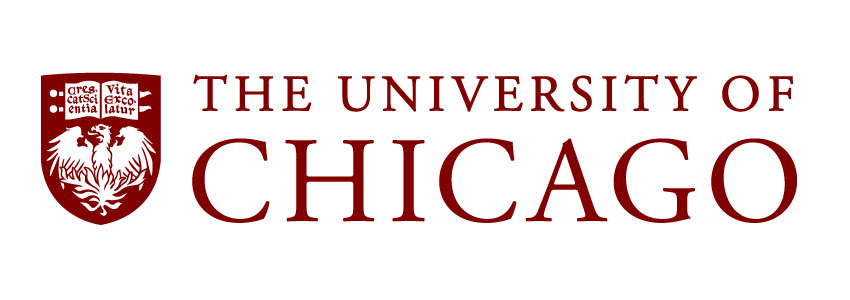Sonalleve Fibroid Ablation Pivotal Clinical Trial for MR-HIFU of Uterine Fibroids
| Status: | Recruiting |
|---|---|
| Conditions: | Cervical Cancer |
| Therapuetic Areas: | Oncology |
| Healthy: | No |
| Age Range: | 18 - 50 |
| Updated: | 4/13/2015 |
| Start Date: | May 2012 |
| End Date: | April 2019 |
| Contact: | Linsey Walker |
| Email: | linsey.walker@philips.com |
Philips Pivotal Clinical Trial for MRI-guided High Intensity Focused Ultrasound Ablation of Uterine Fibroids
The purpose of this clinical study is to determine whether treatment with the Philips
Sonalleve Magnetic Resonance-guided High Intensity Focused Ultrasound (MR-HIFU) system is
effective in the treatment symptomatic uterine leiomyomas (uterine fibroids).
Sonalleve Magnetic Resonance-guided High Intensity Focused Ultrasound (MR-HIFU) system is
effective in the treatment symptomatic uterine leiomyomas (uterine fibroids).
Uterine Fibroids are the most common benign tumors in pre- and peri-menopausal women.
Fibroids occur in 20-50% of women over 30 years of age, and with increasing size can produce
pain, menorrhagia, pressure, bloating and urinary and bowel compression symptoms. Fibroids
may also cause infertility. Symptomatic fibroids impact health and well-being of the female
including lost work hours and reduced quality of life.
Current medical treatments include invasive removal of the fibroid (hysterectomy,
myomectomy), drug therapy, or treatments causing necrosis of the fibroid tissue such as
ablation (freezing or heating) or embolization. It has been estimated that 600,000
hysterectomies are performed per year in the United States and more than half of the
conducted hysterectomies are due to fibroids. For the relief of symptoms, women wishing to
preserve the uterus may choose between invasive procedures of myomectomy, Uterine Artery
Embolization (UAE), ablation or cryotherapy. The surgically invasive procedures require
anesthesia, hospital stays, and long recovery periods. However, High Intensity Focused
Ultrasound (HIFU) shows promising results in relieving fibroid symptoms.
This study will confirm the safety and clinical effectiveness of Philips Sonalleve MR-HIFU
Fibroid Therapy system for ablating symptomatic fibroids.
Fibroids occur in 20-50% of women over 30 years of age, and with increasing size can produce
pain, menorrhagia, pressure, bloating and urinary and bowel compression symptoms. Fibroids
may also cause infertility. Symptomatic fibroids impact health and well-being of the female
including lost work hours and reduced quality of life.
Current medical treatments include invasive removal of the fibroid (hysterectomy,
myomectomy), drug therapy, or treatments causing necrosis of the fibroid tissue such as
ablation (freezing or heating) or embolization. It has been estimated that 600,000
hysterectomies are performed per year in the United States and more than half of the
conducted hysterectomies are due to fibroids. For the relief of symptoms, women wishing to
preserve the uterus may choose between invasive procedures of myomectomy, Uterine Artery
Embolization (UAE), ablation or cryotherapy. The surgically invasive procedures require
anesthesia, hospital stays, and long recovery periods. However, High Intensity Focused
Ultrasound (HIFU) shows promising results in relieving fibroid symptoms.
This study will confirm the safety and clinical effectiveness of Philips Sonalleve MR-HIFU
Fibroid Therapy system for ablating symptomatic fibroids.
Inclusion Criteria:
- Women, age between 18 and 50 years
- Ethnicity has a match with the intended profile for the site
- Weight < 140kg or 310lbs
- Pre- or peri-menopausal as indicated by clinical evaluation or Follicle Stimulating
Hormone (FSH) level < 40 IU/L
- Willing and able to attend all study visits
- Willing and able to complete Menstrual Blood Loss (MBL) assessment with Alkaline
Hematin (AH) method
- Willing and able to use reliable contraception methods
- Uterine size < 24 weeks
- Cervical cell assessment by Pap smear: Normal, Low Grade Squamous Intraepithelial
Lesion (SIL), Low risk Human Papillomavirus (HPV) or Atypical Squamous Cells of
Uncertain Significance (ASCUS) subtypes of cervical tissue
- MR-HIFU device accessibility to fibroids such that at least 50% of the total fibroid
volume can be treated.
- Fibroids selected for treatment meeting the following criteria (further extrapolated
in the protocol):
1. Total planned ablation volume of all fibroids should not exceed 250 ml and
2. No more than 5 fibroids should be planned for ablation and
3. Dominant fibroid (diameter) is greater than or equal to 3 cm and
4. Completely non-enhancing fibroids should not be treated as the identification of
treated volume becomes ambiguous
- Patient's self-assessment indicates that she has had episodes of heavy menstrual
bleeding in the past 6 months.
- Menstrual Blood Loss (MBL) ≥150 ml and ≤ 500 ml
Exclusion Criteria:
- Other Pelvic Disease (Other mass, endometriosis, ovarian tumor, acute pelvic disease,
significant adenomyosis)
- Desire for future pregnancy
- Significant systemic disease even if controlled
- Positive pregnancy test
- Hematocrit < 25%
- Extensive scarring along anterior lower abdominal wall (>50% of area)
- Surgical clips in the potential path of the HIFU beam
- MRI contraindicated
- MRI contrast agent contraindicated (including renal insufficiency)
- Calcifications around or throughout uterine tissues that may affect treatment
- Communication barrier
- Highly perfused or brighter than myometrium in T2-weighted MRI (according to the T2
contrast obtained using the Philips MR-HIFU MR protocol) fibroids
- Fibroids not quantifiable on MRI (e.g. multi-fibroid cases where volume measurements
are not feasible)
- Menses lasting > 7 days or intermenstrual bleeding (patient can be included if there
is endometrial biopsy within 6 months to exclude malignancy)
- Patient is currently on hormonal medication for fibroids or has a hormonal medication
history as described below:
1. 1-month Lupron dose or equivalent: less than 1 month prior to MBL measurement or
2. 3-month Lupron dose or equivalent: less than 3 months prior to MBL measurement
or
3. Depo Provera or equivalent: less than 6 months prior to MBL measurement
We found this trial at
7
sites
University of Michigan The University of Michigan was founded in 1817 as one of the...
Click here to add this to my saved trials
Montefiore Medical Center As the academic medical center and University Hospital for Albert Einstein College...
Click here to add this to my saved trials
University of Chicago One of the world's premier academic and research institutions, the University of...
Click here to add this to my saved trials
University of Texas Southwestern Medical Center UT Southwestern is an academic medical center, world-renowned for...
Click here to add this to my saved trials
Click here to add this to my saved trials
Click here to add this to my saved trials
Click here to add this to my saved trials



